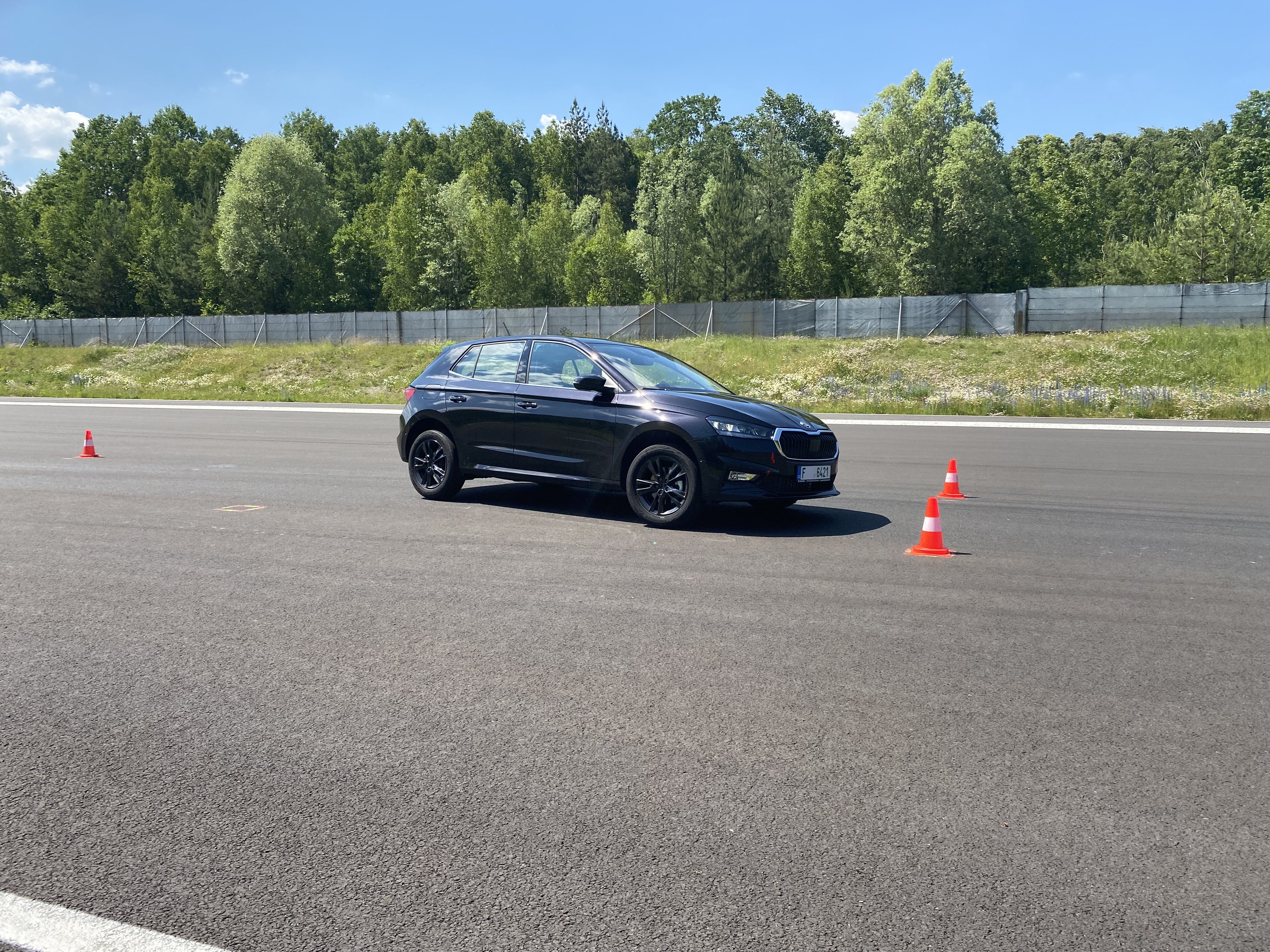Computers also help with tuning
Shock absorber development and adjustment is almost always done in cooperation with a reputable supplier. The biggest modifications are made to the valve system, which determines the oil flow and therefore changes in the damping forces depending on the speed of the piston rod. Each new model has different dimensions, different weight distribution, different body stiffness, all of which can only be compensated for by the damper. Modifications to the valve systems are made directly in the car on pre-production prototypes, up to a year and a half before the official launch.
 Testing the shock absorbers by slaloming between cones.
Testing the shock absorbers by slaloming between cones.
Final tuning is then carried out during test drives. “The supplier comes to the test site with a modified truck and trailer to the test site that is specially equipped for constructing and measuring the development-stage shock absorbers. In addition to this equipment, the company also provides a two-man team of experts who build various combinations of shock absorber valve sets for the ŠKODA chassis development engineers in line with their requirements,” says the chassis specialist, describing how the testing days unfold.
 Driving in a circle tests the shock absorbers’ ability to keep the car evenly balanced.
Driving in a circle tests the shock absorbers’ ability to keep the car evenly balanced.
It’s like a game for big boys, to put it bluntly. The test drivers tell you how the shock absorber should be built – with the help of numbers, computer data and graphs. And then the car just goes around the circuit: fully laden, at a steady or dynamic pace, on an even surface or at maximum motorway speed. The drivers focus on the car’s behaviour and their subjective driving experience. With each new damper valve setting, the developers go for another test drive.































